
endocrine system diagram unlabeled
This article provides detailed information about the endocrine system. The endocrine system is a collection of glands that secrete various chemicals called hormones. These are messages that pass signals through the blood to a targeted organ. The receptor cells recognize these messages and act accordingly.

Endocrine System Diagram for Understanding Hormones from
endocrine system, any of the systems found in animals for the production of hormones, substances that regulate the functioning of the organism. Such a system may range, at its simplest, from the neurosecretory, involving one or more centres in the nervous system, to the complex array of glands found in the human endocrine system.

Endocrine System Chart Human anatomy and physiology, Endocrine system
The endocrine system is in charge of processes that happen slowly, such as the growth of cells. The glands and hormones of the endocrine system influence almost every cell and organ in the body. Homeostasis - a stable internal environment - (nutrition, metabolism, excretion, water and salt balances).
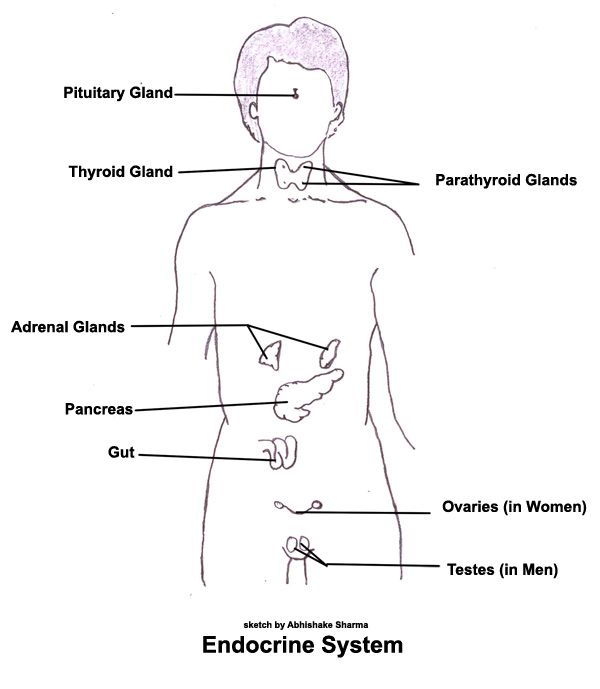
endocrine system diagram for kids
The parathyroid glands are four masses of tissue, two embedded posterior in each lateral mass of the thyroid gland. One adrenal gland is located on top of each kidney. The cortex is the outer layer of the adrenal gland. The medulla is the inner core. Major endocrine glands. (Male left, female on the right.) 1.

Introduction to Human Endocrine System Definition, Examples, Diagrams
Figure 14.1.1 14.1. 1: Endocrine System Endocrine glands and cells are located throughout the body and play an important role in homeostasis. The ductless endocrine glands are not to be confused with the body's exocrine system, whose glands release their secretions through ducts. Examples of exocrine glands include the sebaceous and sweat.

Human Endocrine System Diagram koibana.info Endocrine system
The endocrine system is a network of glands and organs located throughout the body. It's similar to the nervous system in that it plays a vital role in controlling and regulating many of the.

Endocrine System 2 period group 3
The endocrine system consists of cells, tissues, and organs that secrete hormones as a primary or secondary function. The endocrine gland is the major player in this system. The primary function of these ductless glands is to secrete their hormones directly into the surrounding fluid.
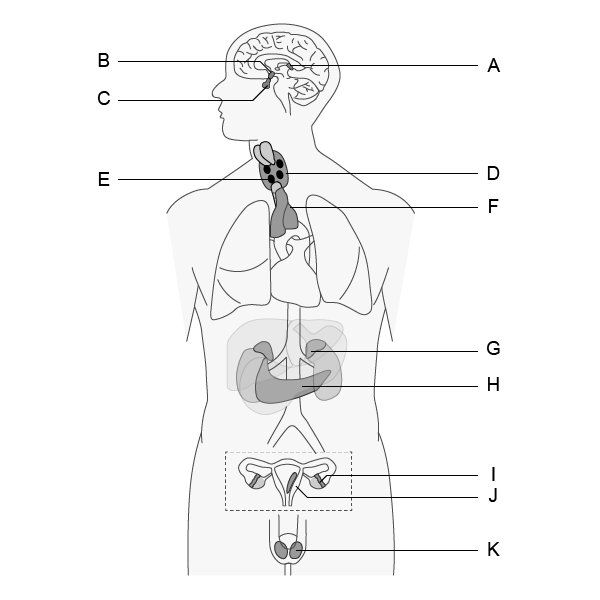
Endocrine System Labeling Worksheet
This typically means there's too much or not enough of one or more hormones. But issues directly affecting endocrine system glands and organs, like benign and cancerous tumors, also account for endocrine diseases. The below groupings cover some — but certainly not all — endocrine system-related conditions. Diabetes and metabolic conditions:

endocrine system hormone imbalance Endocrine system, Human
The Endocrine system sends hormones through the Circulatory system to control and coordinate body functions in much the same way as the nervous system uses tiny electrical signals. The Endocrine system and the Nervous system work together to integrate in the brain and complement each other, but they tend to work at different speeds. Some.

We need an endocrine system because without it, there would be mostly
The endocrine system is a complex network of glands and organs. It uses hormones to control and coordinate your body's metabolism, energy level, reproduction, growth and development, and response to injury, stress, and mood. The following are integral parts of the endocrine system: Hypothalamus.
The most concise visual representation of the endocrine system (glands
Figure 17.2 Endocrine System Endocrine glands and cells are located throughout the body and play an important role in homeostasis. The ductless endocrine glands are not to be confused with the body's exocrine system, whose glands release their secretions through ducts. Examples of exocrine glands include the sebaceous and sweat glands of the.
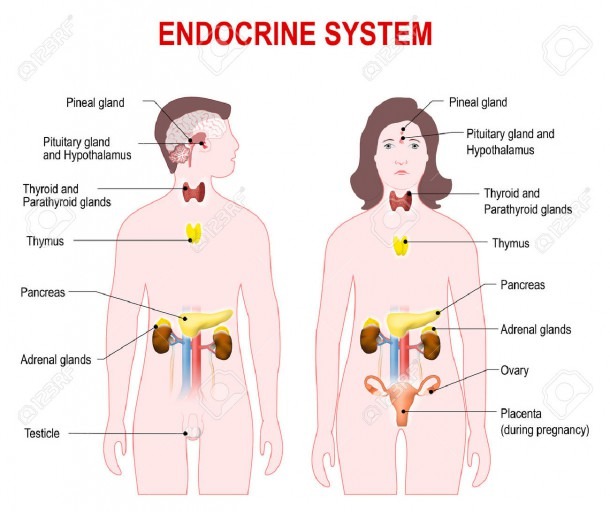
Endocrine Glands Diagram
The endocrine system, labeled diagram. Anatomy of endocrine organs in male and female, labeled diagram. Thyroid gland, medical drawing. Thyroid gland location and anatomy, unlabeled. Pituitary gland, medical drawing. Illustration of the pituitary gland, anterior and posterior lobes, unlabeled version. The pituitary thyroid axis, labeled diagram.

The Endocrine System Introduction to Psychology
The endocrine system includes the pituitary, thyroid, parathyroid, adrenal, and pineal glands (Figure 14.1.1 14.1. 1 ). Some of these glands have both endocrine and non-endocrine functions. For example, the pancreas contains cells that function in digestion as well as cells that secrete the hormones insulin and glucagon, which regulate blood.
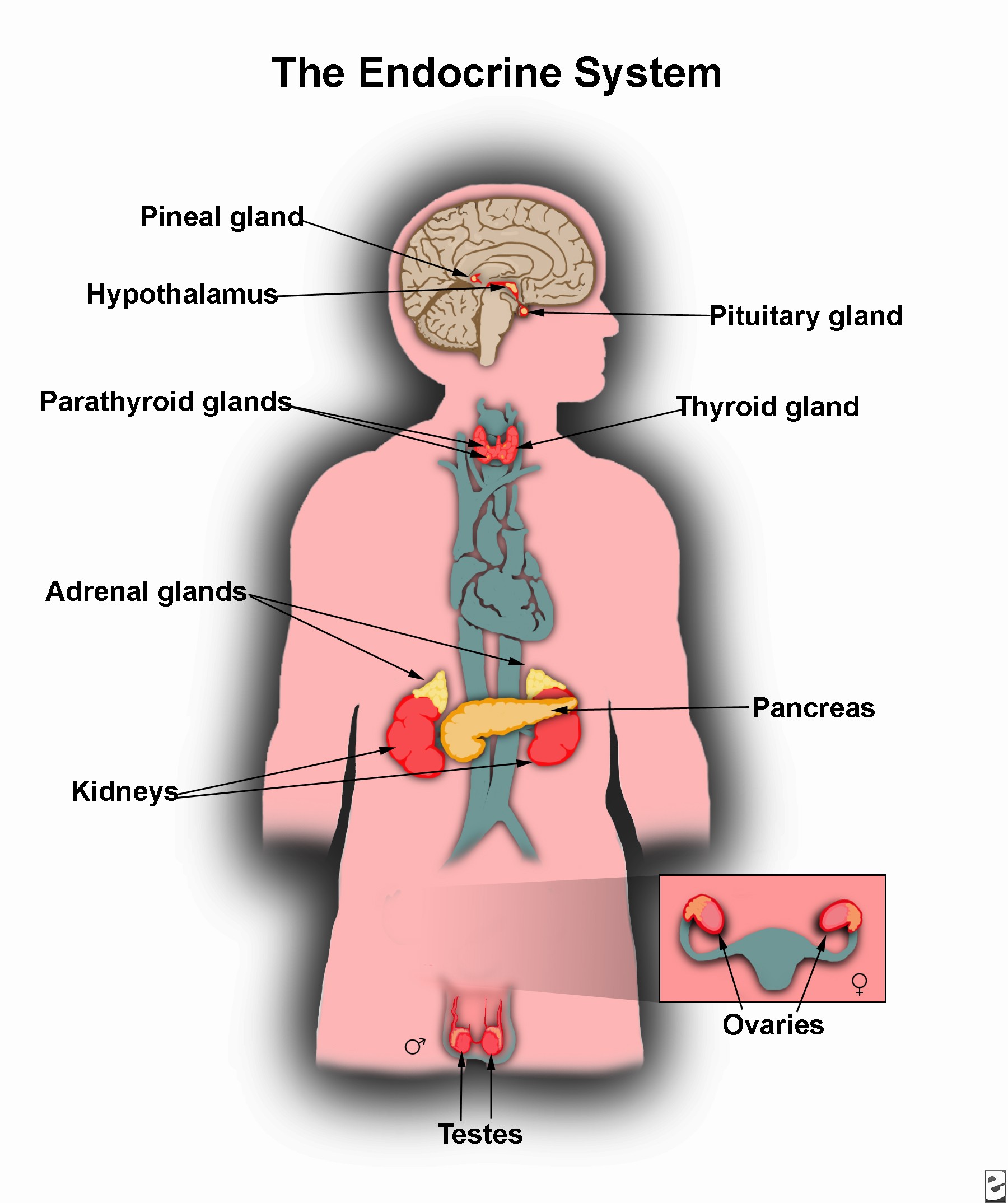
to Dehlvi Naturals
The. endocrine system. is a system of glands called endocrine glands that release chemical messenger molecules into the bloodstream. The messenger molecules of the endocrine system are called endocrine hormones. Other glands of the body, including sweat glands and salivary glands, also secrete substances, but not into the bloodstream.
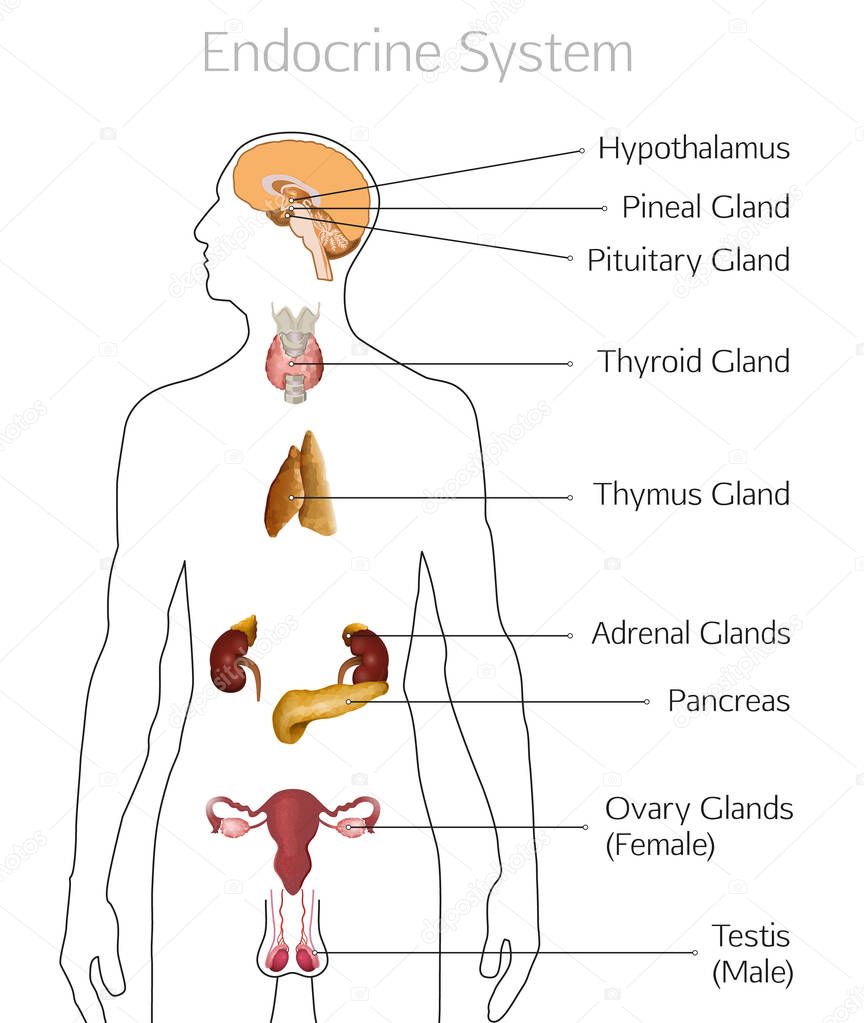
Endocrine System Image — Stock Vector © annyart 161836184
The endocrine system is a collection of glands. These glands secrete a variety of hormones, which travel to specific target organs via the bloodstream. Hormones have specific functions such as regulating growth, metabolism, temperature and reproductive development.
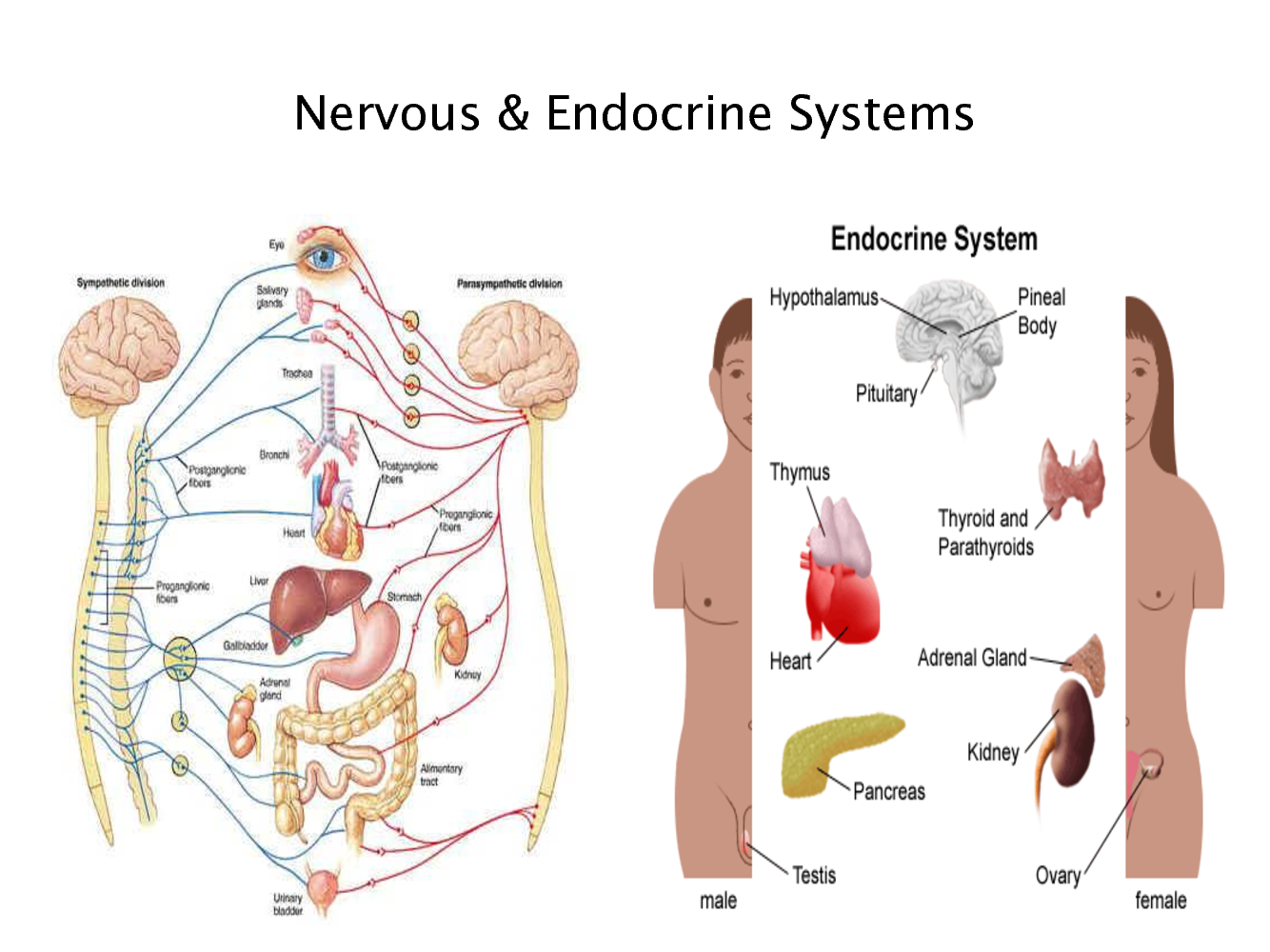
endocrine system diagram for kids
Learn about the incredibly complex and endlessly fascinating functions of the endocrine system with 3D models and descriptions that guide you in exploring the anatomy of its glands and the hormones they produce. By: Tim Taylor Last Updated: Nov 23, 2020 2D Interactive NEW 3D Rotate and Zoom Anatomy Explorer HEAD AND NECK UPPER TORSO LOWER TORSO